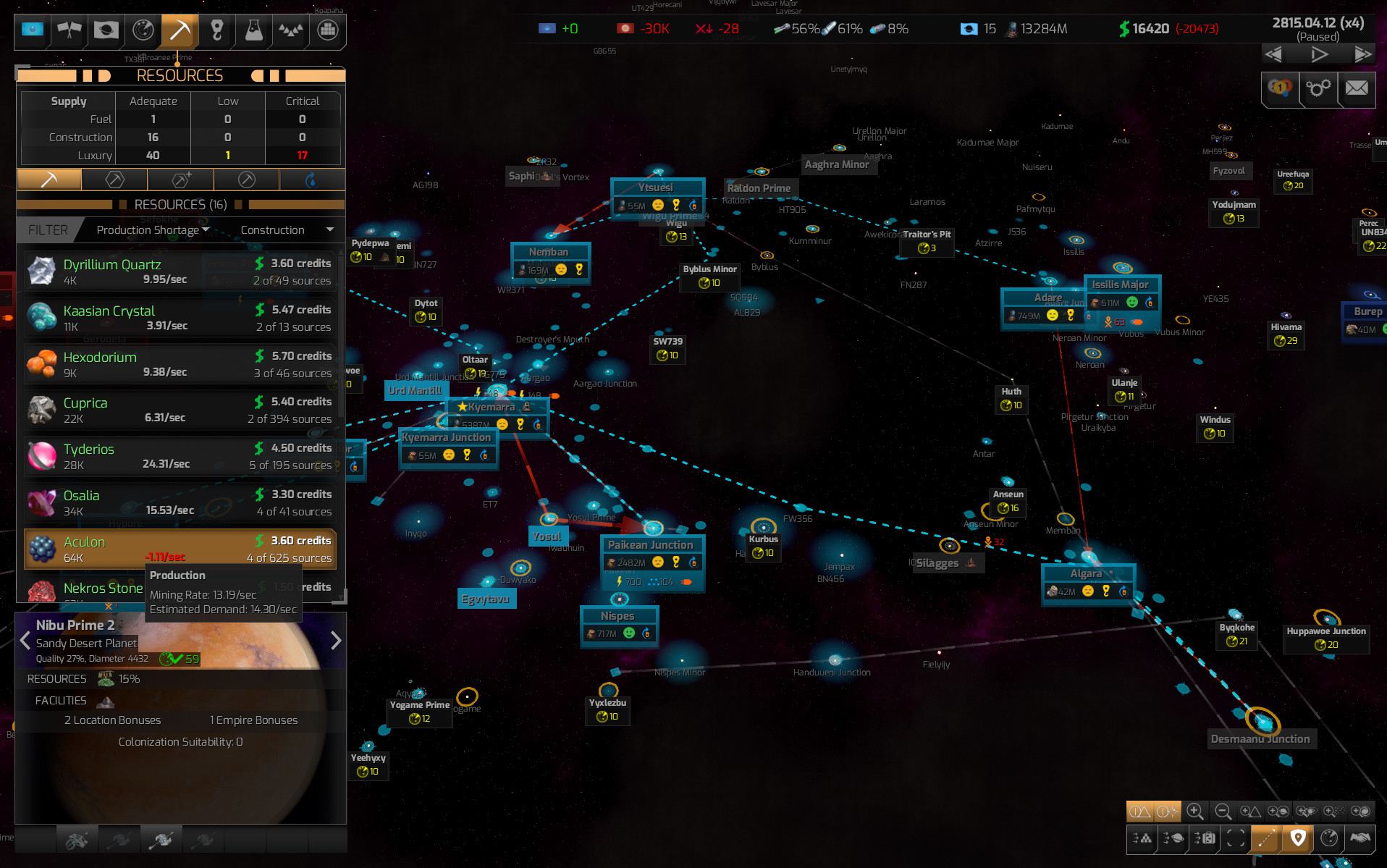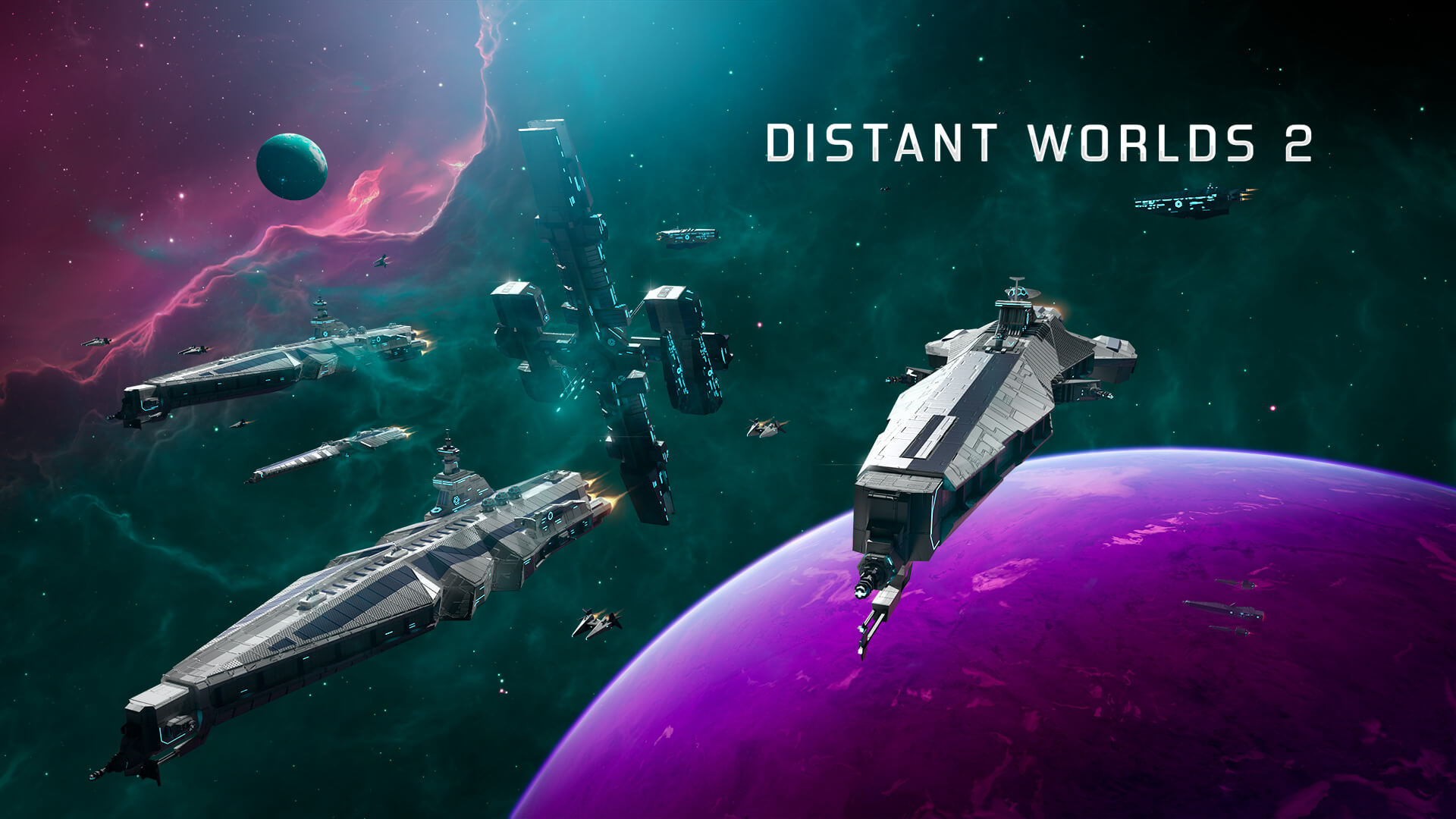In a dark corner of a hostile galaxy, the primitive tribe of New Hellas have finally mastered spaceflight and begin to slowly edge out of their gravity well to explore the rest of their star-system. Their ancient Republic stands for justice, fairness and law. Their scientists strive to develop a “stable warp field” as their pre-warp ships travel across explored space.
Another pop up appears. Their fearless leader sighs and looks at it. It’s one of the myriad advisers to the Republic. “You should build more exploration ships”. The President nods and the construction work begins.
Distant Worlds 2
Distant Worlds 2 is the sequel to the venerable, quirky but in many ways classic Distant Worlds (and its uber-cousin Distant Worlds Universe). A sprawling 4X strategy (Explore, Expand, Exploit and of course, Exterminate).

CodeForce have worked hard to move Distant Worlds on. They’ve updated the graphics, cleaned the old, somewhat eccentric UI and made the overall experience much slicker. As a result, Distant Worlds 2 is far more approachable than its venerable predecessor.
Deep Customization
The game still offers the classic 4X set up, however. To begin, the player must choose how to organize their universe. There’s a vast array of options to select from. Those include galaxy shape and size, and how many opponents will there be to challenge your rule. In addition, there’s an in-game editor. An excellent idea, although it isn’t that easy to use.
Then the player must set up their Empire. Currently, you can play as one of just seven races, although you can fine-tune its template. You can be human, of course – but why not be a Zenox (proud cat people) or the fierce Mortalans (big lizards)? You can also decide your government type, ranging from a republic or democracy to feudalism or a military dictatorship. Whichever you choose will confer advantages and disadvantages to your starting civilization.
Finally, the game begins. Generally, you’ll start off with a clutch of ships under construction, and probably one explorer ship – to scan the various worlds in your starting system.
Initially, you may be a bit overwhelmed with everything you can do. Especially so, as the game starts serving you with pop-ups suggesting moves – like what to build and such. However, the various menus each have a tour that’ll slowly walk you through how it works. While there is a dizzying array of things to look at and get a feel for, you’ll have time to figure them all out.

One thing to note is that while Distant Worlds 2 may technically be real-time (heresy on this website), it’s pause-able. It’s definitely not a game about quick clicks and reaction speed. You’ll need to plan ahead, understand your Empire’s revenue and capacity, and build up its infrastructure.
Exploring the Galaxy
One of the most novel features in Distant Worlds 2 is the ability to automate almost every element of your civilization. The options range from partial automation – like sending a construction ship to build mining outposts, to fully autonomous. The AI performs fairly well, and during my playthrough I didn’t notice it doing anything too weird.
In addition, Distant Worlds 2 includes another novel system – the private sector: civilian ships and stations. Trying to balance the civilian and the government needs definitely adds to the feeling of having a real, thriving civilization. Plus, the extra ships moving about is a nice detail.
With this game, it’s worth talking about scale. Even with a smaller starting galaxy, Distant Worlds 2 is massive. You can expect to see hundreds of star systems, with maybe a dozen worlds around each. Every one will have potential mineral and research values, and many can be colonized.
Add to this NPC colonies, rival AI empires, NPC pirates and even space monsters – and the game universe quickly gets both full of life and very hectic. With all that, you’ll find yourself slowing the game down and pausing an awful lot. I don’t think this means you’re failing – but it can make the pace a bit jarring; as you go from the sedate crawl of the beginning – to multiple contacts with pirates – and then your first contact with a rival empire. There’s so much to do, you really can’t concentrate on all of it.

However, given enough time and experience, plus some automation – and the workload can become a bit more reasonable.
Distant Worlds isn’t just about a giant galaxy however – there’s a lot of granular detail too. For example, players can design their own ships with a huge array of modules – to fit in numerous ship hulls, for all sorts of roles; assign these ships to fleets – and then give these fleets assignments, and even a commander.
Players can also delve into the game’s huge tech tree and research their way from pre-warp to God-Like technology. Distant Worlds 2 is all about customizing your Empire to suit your play style and dealing with emerging challenges. It offers hundreds of ways to solve problems; although some appear to be more effective than others at the moment.

Graphically, Distant Worlds 2 is pretty solid, with great zoom options and nice ship models. Although at really zoomed-out levels, all you’re seeing are the ships’ borders, telling you what kind they are and who they belong to. There are also plenty of nice textures for the various worlds you encounter.
The UI isn’t bad – but still, there’s a lot of trawling through menus, and trying to remember where things are. While the game offers a ton of information, it can be hard to sift through the noise to get what you need. A few things also feel somewhat counter-intuitive – like the ship constructor seems to be in the wrong place.
Issues
The game does a lot of things well. Still, there are, sadly, many problems with Distant Worlds 2; as it currently stands, it’s hard to give it much of a recommendation. While the graphics are generally good, the game still suffers from lots of graphical issues. There are slowdowns even on a powerful machine – and lock-ups, and the occasional CTD. In fact, there were so many problems, it caused my old PC’s graphics card to completely break down. This certainly makes one think the game hasn’t been properly optimized.
Distant Worlds 2 also has a strangely detached feel to its gameplay, lacking the charm and humor of Stellaris – a comparison that does Distant Worlds 2 no favors. To be fair, Stellaris was somewhat feature-bare on its initial release. Still, it never had these sorts of performance issues.
Another problem with Distant Worlds is a lack of polish and a lack of variety. Characters all look pretty much the same, making it hard to care which one is which. In any case, there’s not much you can do to interact with them, beyond assigning them to a facility or a station. It also didn’t feel like there was much difference between a republic and a military dictatorship – beyond the starting bonuses.
There are currently only seven playable races, which makes the galaxy feel strangely small. While you can play against a dozen alien empires, you’ll likely see more than one Zenox or Human civilization out there. While the procedurally generated egalitarian warlike mushroom people of Stellaris can be a bit jarring, at least its galaxy feels populated, diverse and exciting. Distant Worlds 2 galaxies often seem a bit lifeless.
Conclusion

There’s a lot of work to come on Distant Worlds 2 – and the devs have made it clear that they are working hard to get the game up to the level that it should be. However, with the “mixed” score on Steam and a fairly high starting price point, I can’t really recommend it at the moment. For this sort of 4X, Stellaris is still the gold standard, and Distant Worlds is more frustrating than fun to play.
Give the game a year of dev time and maybe its first DLC, and then take a look again. There’s life out there, but it might not be ready to be found just yet…









